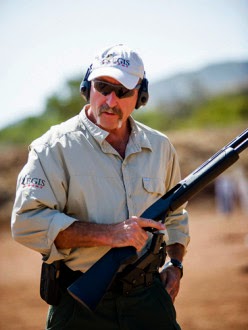Red Dot Optics

Again, some background on what electronic sights do and how they work will enable the shooter to choose the best Red-Dot system for his or her application. An Electronic sight is not a scope…it does not magnify the image at all; it simply projects a Red Dot on a single lens that can be superimposed on the target. This eliminates all the alignment issues with iron sights and it has virtually no parallax, meaning the dot is in constant alignment with the barrel of your weapon. With this new type of optic, operators could engage moving targets in low light conditions, at close to medium ranges with both eyes open giving the shooter a full field of view and allowing for much more situational awareness (SA) on the battlefield. Having the target and the Red Dot in the same focal plane is huge, you simply have to put the dot on your target and manipulate the trigger correctly. These types of optics became the norm for all Special Mission Units by the early ‘90’s and have been adopted by most specialized law enforcement units as well.
The two main types of electronic sights are the reflex sight and holographic sight. Both use different technology to accomplish the same task. A reflex sight system simply reflects the aiming reticle forward from a point behind the objective lens; this can be done with battery power or a fiber optic system that gathers ambient light. With a holographic sight system a sighting reticle is superimposed by way of a laser transmission hologram and this reticle is projected back towards the shooter onto an objective lens. Same result done quite differently and with modern LED diodes and lithium batteries, these optics can run for 10,000 hours on a single battery. However, in a Maritime environment I still prefer the fiber optic solution simply because anything and everything can get compromised with moisture.
The reticle you will see on many of the objective lenses on either system is a simple red dot (Aimpoint) of any size that works for your eyes, usually 5-20 MOA depending on your use, or a red dot in a circle (EO Tech). Most of the 3-gun competitors have gone to a fully independent electronic Red Dot systems on a cantilever mount to the outboard side of their Carbine and a scope system on a rail right above the upper receiver. Giving them the ability to use the magnification of the scope at longer ranges, then cant the weapon inboard to expose the Red Dot sight for close to medium ranges 7-75yards. This system keeps the mechanical offset reasonable and is extremely quick in transition from near, to far distances and is very simple to use. Some competitors are now putting a Ruggedized Miniature Reflex (RMR) sight on the rear of their pistol slide and getting great results in IPSC events. I’m going to mount a RMR system on the top rail of my Benelli shotgun just to see how much faster than iron sights it really is, should be great for close ranges and very accurate for longer slug targets, this type system sells for approximately $500 so it is not cheap, but has proven to be very durable and reliable, stay tuned for a full report very soon.
This brings me to the next topic which is the co-witnessing of both your Red-Dot sight and your iron sights. Done properly your iron sights will have almost the same Battle Sight Zero (BZO) as your electronic sight and can be used as an emergency back-up sighting system if your battery doesn’t function when needed. A hasty co-witness can be done in minutes by simply using the same cheek-weld for your iron sights and adjust the red dot so it sits right on top of your front sight post. Start with your iron sights and shoot your irons, confirm and/or adjust your zero, then repeat the process with your Red-Dot and adjust as necessary. Always confirm using your near and far zero to ensure you have the best co-witness possible if you have the time and range space. Be careful to remember that the amount of adjustment will be different going from one sighting system to the other. If done properly you will have an almost exact point of aim (POA) and point of impact (POI) with both systems on your weapon. Depending on the size of your dot and type of ammunition used. Always try to shoot with the same or similar ammo that you used for your co-witness BZO to eliminate any possible changes in your near/far zero, it’s usually the shooter, not the ammo. In a future article we will discuss the newer Tactical Rifle Scopes and their development in the modern era.
About Author
Chris White ~ Range Master

First published at Aegis Academy

No comments:
Post a Comment